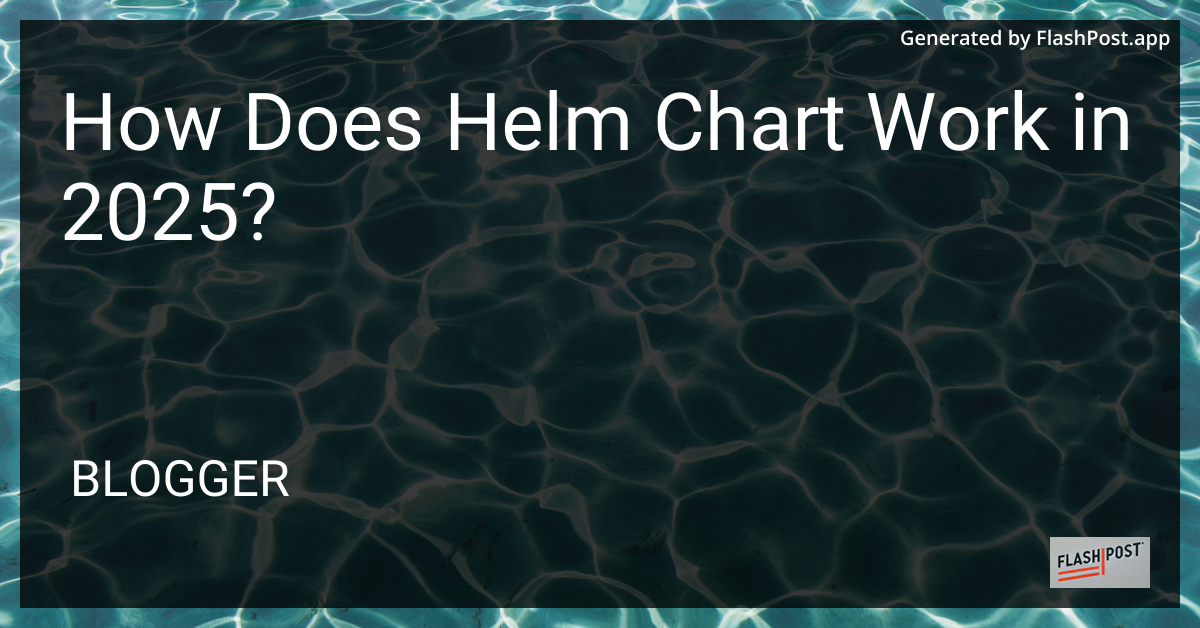How Does Helm Chart Work in 2025?

How Does Helm Chart Work in 2025?
In the rapidly evolving world of Kubernetes, Helm charts continue to streamline application management for developers and operations teams. As we step into 2025, understanding how Helm charts function has become essential for effective cloud-native application deployment. Let’s delve into how Helm charts work today, their importance, and their future potential.
What is a Helm Chart?
A Helm chart is a collection of files that describe a related set of Kubernetes resources. It simplifies the deployment and management of applications on Kubernetes by packaging all necessary resources into a single unit. Helm charts facilitate the easy installation, upgrade, and management of even the most complex Kubernetes apps.
The Anatomy of a Helm Chart
In 2025, the basic structure of a Helm chart remains fairly consistent, comprising several key components:
- Chart.yaml: Contains metadata about the chart including its name, version, and other associated details.
- values.yaml: Defines default configuration values for the chart.
- templates/: Contains the templates that, when combined with values from values.yaml, generate the necessary Kubernetes resources.
- charts/: A directory where additional dependent charts could be placed.
- README.md: Provides descriptions and instructions for utilizing the chart.
How Helm Charts Work
Installation
Helm charts work in 2025 by providing an efficient and reusable means to manage Kubernetes applications. Upon installation, Helm reads the chart and applies the configuration defined in values.yaml to the templates under the templates/ directory. The rendered Kubernetes resources are then deployed to the target cluster. This process can be seamlessly accomplished via the command line or CI/CD pipelines.
For users needing to install specific versions of Helm, the process remains straightforward and documented, allowing precise control over which Helm version to deploy.
Upgrade
Helm charts support robust application upgrades, ensuring that resources are updated based on changes to the values.yaml or chart templates. Users can modify configurations, and Helm will handle adjustments, ensuring minimal downtime and rollback capability if needed.
Management
Managing Helm charts is now more advanced with support for complex scenarios such as managing arrays and nested configurations. A resource on Helm array management can provide deeper insights into harnessing this feature for efficient deployment strategies.
The Future of Helm Charts
As we advance into 2025, Helm charts are expected to evolve further, simplifying Kubernetes application lifecycle management. They will continue to integrate more tightly with CI/CD tools, support an ever-growing array of Kubernetes features, and provide enhanced security options for enterprise applications.
Conclusion
Understanding how Helm charts work is crucial for Kubernetes practitioners in 2025. They remain an indispensable tool for managing containerized applications, offering simplicity, efficiency, and scalability. Whether you are in development or operations, mastering Helm charts will ensure you stay ahead in the Kubernetes ecosystem.
For those just beginning their journey or looking for where to acquire essential tools, such as snowboard helmets, having the right set of skills and equipment can make all the difference.
Comments
Post a Comment